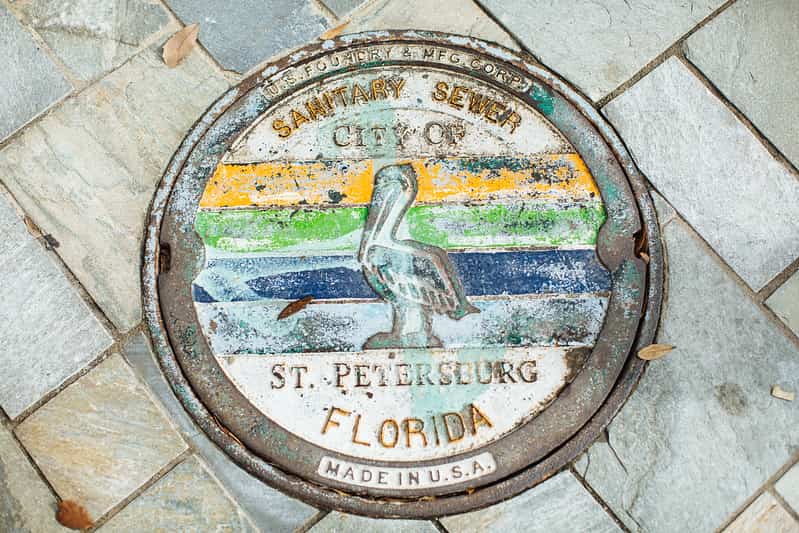Can St. Pete afford capital improvements and stadium costs?

City officials project that St. Petersburg will spend $6.8 billion on capital improvements over the next 30 years, with water resources and infrastructure improvements accounting for 73%.
That is the same length as the Tampa Bay Rays’ proposed lease on a new ballpark, and 10 years beyond the Historic Gas Plant District redevelopment’s expected construction timeline. Councilmember Lisset Hanewicz requested the presentation on planned capital improvement costs as she and her colleagues will soon vote on contributing $400 million to the project.
She compared the Thursday morning committee meeting to someone discerning if they could afford a new mortgage and still prepare for retirement. “I want to make sure that we have all the information and understand our city’s needs,” Hanewicz said.
Tom Greene, assistant city administrator, began by noting the exercise required several financial and policy assumptions. He also reminded council members that they vote on annual budgets.
“We try to make those decisions collectively – administration and council – to fund those highest needs,” Greene said. “And as everyone knows, we never have sufficient resources in any fiscal year to address all the needs. It’s a challenge, and we have to make those difficult funding decisions.”
However, the overarching theme was that officials have positioned the city to afford nearly $7 billion in expected capital improvements and contribute to the stadium and surrounding redevelopment’s costs. Much of that is due to recent growth providing an influx of property taxes, and Penny for Pinellas proceeds from the county.
St. Petersburg’s net position – assets minus liabilities – was $1.5 billion in 2023 and has steadily increased since 2018. “What you know today will change tomorrow,” said Anne Fritz, debt financing director. “And I think that’s important to know.”
“What is also important is, when we look at it from a financial standpoint, the city is very strong,” she added. “I’m not just saying that.”
Water and sewer infrastructure costs will reach nearly $3.4 billion over 30 years. Many expenditures are in the 20-year Integrated Water Resources Master Plan.
Funding for those and other utility capital improvements is equally split between service charges and tax-exempt bonds. The 30-year stormwater estimate is $1.6 billion, and documents show those rates gradually decreasing from 15% to 7.5%.
Fritz said state and federal grants and county taxes significantly contribute to utility project costs. Claude Tankersley, public works administrator, said the forecast included a 5% annual rate increase, the current industry average.
Hanewicz noted that $4 billion in water-related infrastructure expenditures are “a huge part of the bucket,” and questioned the math. The city budgeted $88 million for those projects this year.
“We need $167 million a year, basically, to do it within 30 years,” Hanewicz said. “And we’re at $88 million. Does that sound about right?”
Tankersley concurred and said costs fluctuate. In addition, he said administrators would continue exploring ways to mitigate expenditures.
Tankersley also cautioned against applying conclusions from a 30-year forecast to “individual annual decisions that we collectively will have to make.” Hanewicz said the council must vote on the Gas Plant redevelopment’s 30-year plan, “and there’s all sorts of projections on it.”
“Even including revenues that may or may not materialize,” she added. “So yes, I’m absolutely aware. That’s why we’re doing this exercise.”
Councilmember Ed Montanari believes officials have “turned a corner” regarding water-related infrastructure investments in recent years. He said bonding debt accounted for 90% of capital improvement funding in 2016.
“Talk about handing a bill to your children and grandchildren, that’s what we were doing,” Montanari said. “Now we’re up to 50-50.”
Administrators continued down a capital improvement list with 18 categories, including streets, sidewalks, bridges and facilities. They believe the city is well-positioned to cover planned investments, and Montanari agreed.
He said people once thought the city could not afford a new control tower for Albert Whitted Airport or an expanded municipal pier project. The city found a way to fund both, and Montanari expressed confidence that success would continue.
Council Chair Deborah Figgs-Sanders said she entered the meeting with two objectives: To discern the city’s financial strength and “what that would look like with a 30-year term, based on the Historic Gas Plant project.” She called the results a net positive.
“Based on our net position, our percentage of life remaining on our assets and with the assumption of our 30-year capital needs, it seems like we still have a lot of room to where we can bend and grow to our needs in the city … and do everything that we’re talking about,” said Councilmember Copley Gerdes. “Would that be accurate?”
“I believe so,” answered Greene. “Yes sir.”








Adrian Gansen
April 14, 2024at6:37 am
In all of the discussions about the HGPD development, I’ve not found any talk of the mandatory remediation of the site and the undoubtedly astronomical cost. It’s not hard to imagine that the stadium and surrounding property is a potential superfund site. Should that not be a key part of the equation?
Philip
April 12, 2024at3:43 pm
If the City regarded this agreement with the Rays from a business point of view they would never do it. The City should get a monetary return on their investment as well as all the things Bill Herrmann wrote about in his response to this article (see above). Studies have shown that a Major League Baseball team provides little in the way of economic impact for city. The taxpayers should demand be allowed to vote on this because it is so large a commitment.
Steve D
April 11, 2024at10:03 pm
It humors me when lay people seem to think that they know more than independent watchdogs who are already suspicious of these agreements. With three conditions attached, even this independent watchdog would recommend this deal. These conditions are already, reportedly, part of the deal. So, apparently, the only thing being protected are old curmudgeon egos.
Mike C
April 11, 2024at9:56 pm
Comments are spot on… I shared with friends in MA and they LOL. The Kraft’s flipped the bill for Gilette stadium… 100%. The Rays franchise is not the Patriots franchise but having the city pay for the content proposed is irresponsible.
Alan DeLisle
April 11, 2024at6:05 pm
The real question is whether the deal is fair to both sides based on the market. It is not. It is a one-sided deal, an embarrassing one- sided deal that has the taxpayer throwing excessive money at the Ray’s. It is way out of line compared to the more recent baseball stadium/development deals in this country.
No city pays for the stadium, pays for all the infrastructure for development and gives away most of the land for the stadium and development. And the city goes even further, believe it or not, giving up all its revenue from the old stadium deal, guaranteeing affordable housing grant money, giving up all naming rights revenue, and paying for all Community Benefit projects ($50 million) by reducing land costs.
Oh, and the bad news keeps coming, sadly. After the city pays for almost everything upfront, the developer gets to take 15 years to develop an absurd amount of minimum development. After doing more multi-million dollar public- private partnerships than I can count in my career, this one fails in almost every way.
Who receives the revenue when the Rays are sold after a new stadium is built and they control all the land? Does the city receive any revenue back on the development revenue after spending $130 million on infrastructure? Come on.
Read the Development Agreement closely and read my assessment. St. Pete deserves so much better. Stay strong St Pete. You can do so much better than this deal. It will take courage. Read the documents. Don’t listen to the hyperbole.
The Rays need to pay its fair share since they benefit from all the revenue. Horrible, horrible deal for the city.
HAL FREEDMAN
April 11, 2024at4:24 pm
Councilmember Ed Montanari mentions the Tower at Albert Whitted and the Pier as projects that required creative funding. The tower was mostly FAA grant money. The Pier was $90M, about 5% of what it will cost the City for its share of a new stadium. The City has never done any project of this order of magnitude. Even the Trop cost pales in comparison. The City has a “net worth” of $1.5B. Their share of the stadium is greater than their net worth. The Council has a fiduciary responsibility to the taxpayers in St. Petersburg. How can they justify this expenditure?
Bill Herrmann
April 11, 2024at3:12 pm
The City must NOT finance infrastructure and other improvements that are the Ray’s responsibility.
What is not mentioned in the article is the $50million needed for the Marina. If the City uses its borrowing capacity for the stadium, it will be forced to use lease-holder financing for the Municipal Marina.
This will create an “economic extortion” scenario. Without an authorizing referendum, the Marina Lease is limited to 5 years. If the City signs a lease and finances the improvements with the leaseholder, when the initial 5-year lease is over- they will need to either find $50 million for the improvements, PLUS any fees for cancellation; OR pass a referendum to extend the lease. Ironically, many council-members, and our Mayor will all be term-limited out of office. The future City Council and Mayor will be forced to either extend a contract or pass a resolution, they will have no other choice.
It should also be noted, that if the City uses its’ borrowing capacity to finance work that was represented as an obligation of the Rays, then Marina Users, would be forced to pay a higher interest rate for the money needed for the Marina restoration. Those of us who have owned boats at the Marina and are still active in the Marina know that these users are not wealthy. They are working people with a passion for the water. Asking them to subsidize the Rays deal is simply unfair.
The Ray’s deal has some flaws, that can likely be worked out. BUT- maxing out our bonding capacity without addressing the Marina is simply a bad idea.